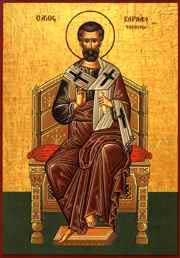Archbishop of Nova Justiniana and All Cyprus | |
|---|---|
| Archbishopric | |
| Eastern Orthodox | |
 | |
| Incumbent: George III since 24 December 2022 | |
| Location | |
| Country | Cyprus |
| Information | |
| Established | 1st century (ancient) 1571 (modern) |
| Website | |
| churchofcyprus | |

The archbishop of Cyprus (officially the archbishop of Nova Justiniana and All Cyprus ) is the head of the Church of Cyprus. The incumbent archbishop is George, in office since 2023. [1] [2]






